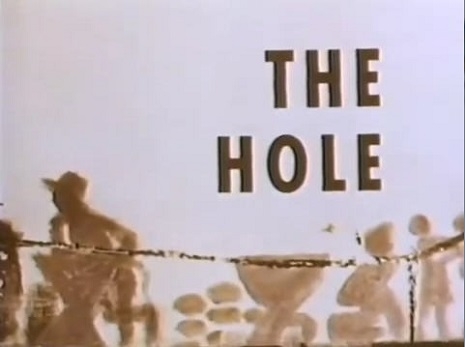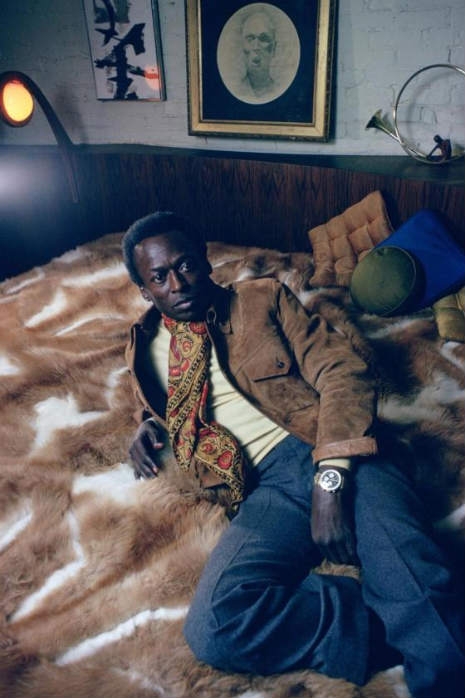
In the mundane setting of a construction site, casual conversation turns into a discussion of freewill, subconscious desires, chaos and the fear of accidental nuclear catastrophe. The animation is muddy, mottled, fluid and shuddering—the product of watercolors on paper, as opposed to the Disney-style of opaque paint on animation cells. The dialogue is improvised—realistically stuttered and stammering, voiced by jazz-great Dizzy Gillespie and George Mathews, a 6’5” actor known most prominently for his roles as tough-guys and heavies. The 15-minute short has the feel of a Jim Jarmusch vignette rather than a kiddie cartoon—a story about a conversation, told with humor, humanity and affection. And the ending is a shock.
If the subject matter feels a little heavy or surprisingly political, it may help to know the context of its creators. The Hole is one of the many gems from animation legends, John and Faith Hubley. Prior to meeting his wife and artistic partner, John Hubley worked for Disney but left during an animators strike. After finding success a second time with another animation company (and creating the character of Mr Magoo), Hubley was fired for refusing to name names before the House Committee on Un-American Activities, and blacklisted throughout the industry.
In 1955, he married fellow animator Faith Chestman, and they opened up their own animation studio, pledging to make one independent film a year. They later made shorts for Sesame Street to finance their more experimental projects. Their independent films were often explicitly political, tackling subjects like war, urbanization and children’s rights, without condescending to the cutesy artistic sensibilities children are so often assumed to possess. The Hubleys were also notable for using improvised dialogue, children’s voices for children’s characters (sometimes their own children) and a diverse cast that avoided the racial cliches pervading the medium at the time.
The Hole won an Academy Award for Best Animated Short Film, and was selected for preservation in the United States National Film Registry by the Library of Congress as being “culturally, historically, or aesthetically significant” in 2013.
Previously on Dangerous Minds:
Brilliant ‘Doonesbury’ TV special from 1977 questions the high-minded ideals of the 1960s






